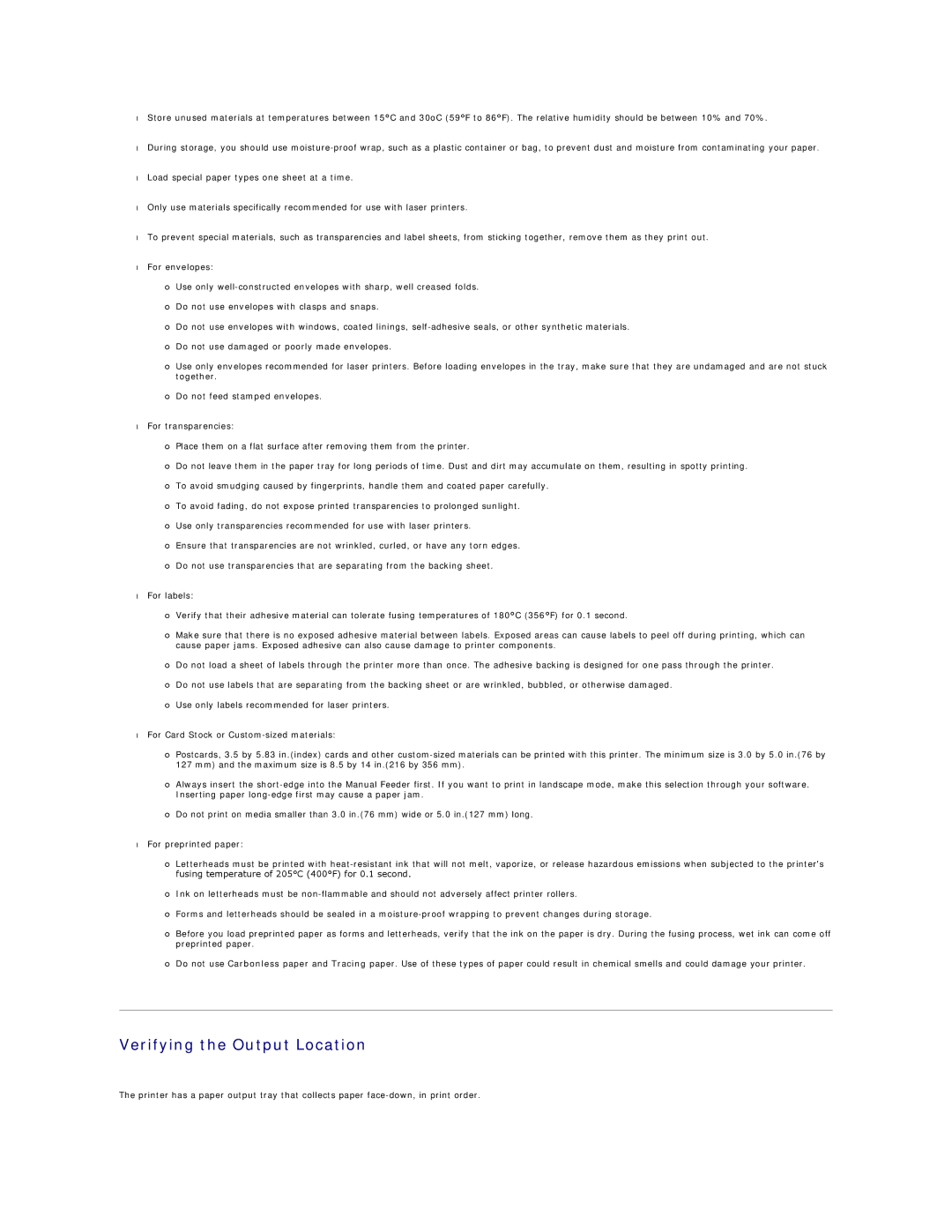•Store unused materials at temperatures between 15°C and 30oC (59°F to 86°F). The relative humidity should be between 10% and 70%.
•During storage, you should use
•Load special paper types one sheet at a time.
•Only use materials specifically recommended for use with laser printers.
•To prevent special materials, such as transparencies and label sheets, from sticking together, remove them as they print out.
•For envelopes:
¡Use only
¡Do not use envelopes with clasps and snaps.
¡Do not use envelopes with windows, coated linings,
¡Do not use damaged or poorly made envelopes.
¡Use only envelopes recommended for laser printers. Before loading envelopes in the tray, make sure that they are undamaged and are not stuck together.
¡Do not feed stamped envelopes.
•For transparencies:
¡Place them on a flat surface after removing them from the printer.
¡Do not leave them in the paper tray for long periods of time. Dust and dirt may accumulate on them, resulting in spotty printing.
¡To avoid smudging caused by fingerprints, handle them and coated paper carefully.
¡To avoid fading, do not expose printed transparencies to prolonged sunlight.
¡Use only transparencies recommended for use with laser printers.
¡Ensure that transparencies are not wrinkled, curled, or have any torn edges.
¡Do not use transparencies that are separating from the backing sheet.
•For labels:
¡Verify that their adhesive material can tolerate fusing temperatures of 180°C (356°F) for 0.1 second.
¡Make sure that there is no exposed adhesive material between labels. Exposed areas can cause labels to peel off during printing, which can cause paper jams. Exposed adhesive can also cause damage to printer components.
¡Do not load a sheet of labels through the printer more than once. The adhesive backing is designed for one pass through the printer.
¡Do not use labels that are separating from the backing sheet or are wrinkled, bubbled, or otherwise damaged.
¡Use only labels recommended for laser printers.
•For Card Stock or
¡Postcards, 3.5 by 5.83 in.(index) cards and other
¡Always insert the
¡Do not print on media smaller than 3.0 in.(76 mm) wide or 5.0 in.(127 mm) long.
•For preprinted paper:
¡Letterheads must be printed with
¡Ink on letterheads must be
¡Forms and letterheads should be sealed in a
¡Before you load preprinted paper as forms and letterheads, verify that the ink on the paper is dry. During the fusing process, wet ink can come off preprinted paper.
¡Do not use Carbonless paper and Tracing paper. Use of these types of paper could result in chemical smells and could damage your printer.
Verifying the Output Location
The printer has a paper output tray that collects paper
